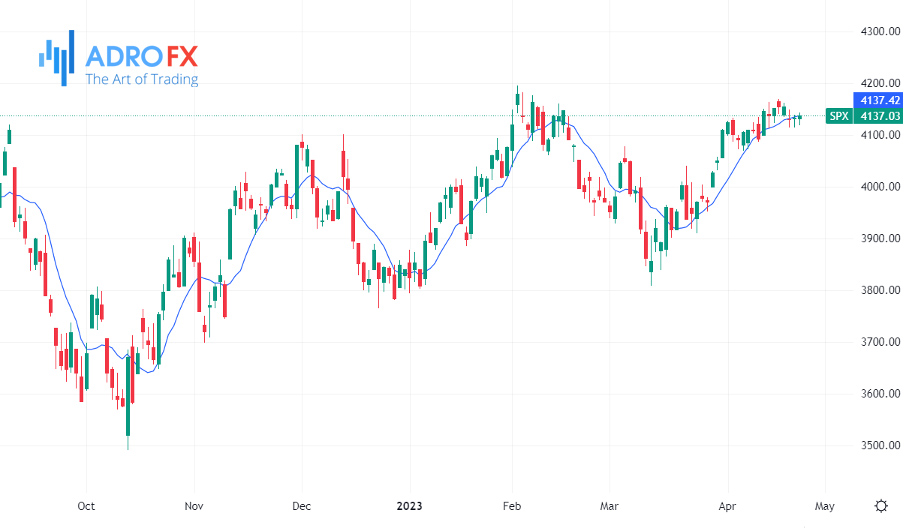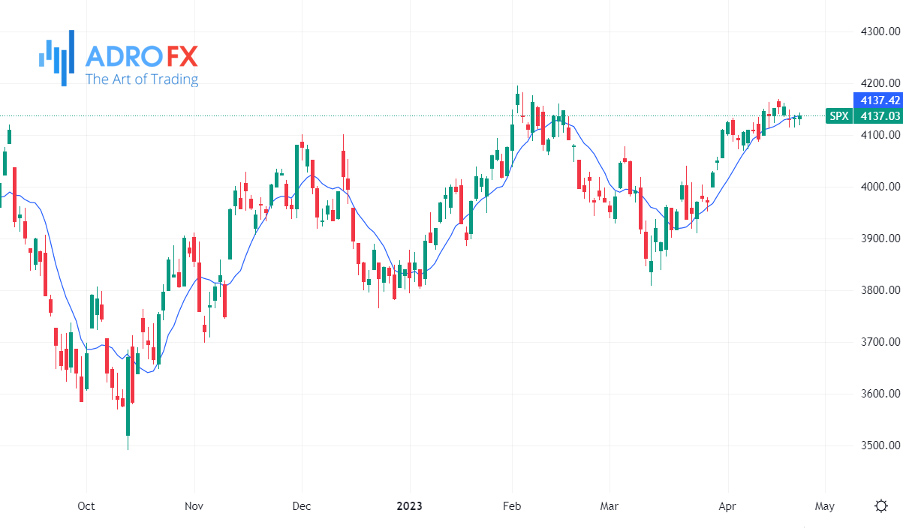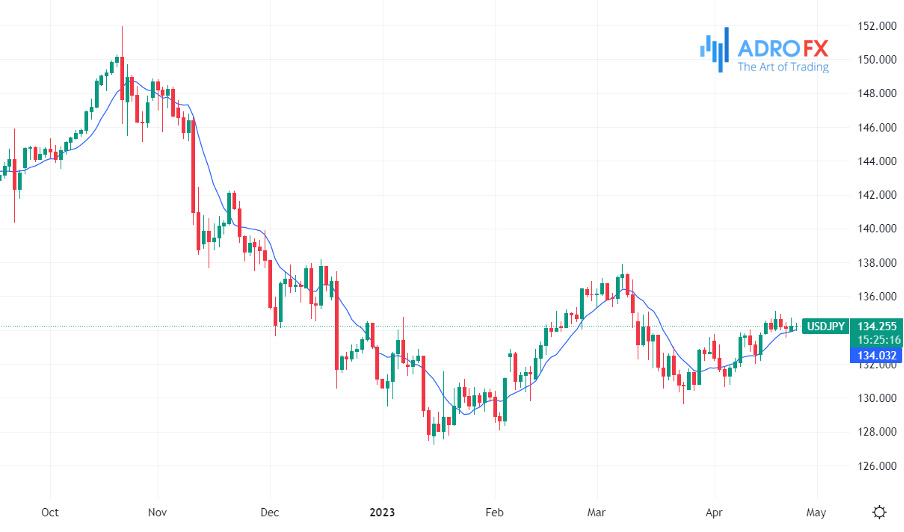Q1 Tech Earnings, Central Bank Meetings, FX Divergence in Focus | Daily Market Analysis

Key events:
- USA – Building Permits
- USA – CB Consumer Confidence (Apr)
- USA – New Home Sales (Mar)
As the new trading week begins, the market is eagerly seeking answers to two crucial questions. Firstly, how did US tech stocks perform in the first quarter, and can their impressive performance justify the surge in their valuations since the beginning of the year? Secondly, what steps will be taken by the Federal Reserve, the European Central Bank, and the Bank of England during their upcoming meetings? Additionally, investors are speculating about whether the Bank of Japan will abandon its yield curve control policy in the first meeting under its new president. The answers to these questions are likely to determine the direction of prices. While there has been relative calm in the stock markets, the FX market has seen some excitement, with EUR/USD breaking above $1.10 and now targeting $1.1050 resistance.

As weaker stocks, a weaker dollar, and volatile bond markets are not sustainable over the long term, the market is on the lookout for catalysts that could drive short-term price action.
The Q1 earnings season for US companies has begun, and while it has performed better than Q4 2022 and Q3 2022, the rate of positive earnings surprises and the magnitude of these surprises is lower than the 5-year average. According to FactSet, of the 18% of companies listed on the S&P 500 that have already released Q1 earnings, they are beating earnings expectations by a margin of 5.8%. This is below the 5-year average of 8.4%, but given the negative sentiment leading up to the earnings season, it is still a decent performance.

However, it is important to note that the market still expects a significant YoY earnings decline for Q1, and 60% of the S&P 500 is expected to report results in the next two weeks, making it premature to draw any conclusions at this point. Six of the 11 sectors in the S&P 500 have reported a YoY decline in earnings, with healthcare, materials, IT, and communications being the worst performers.
The market is currently cautious about stocks and has scaled back some of its earlier enthusiasm. Valuations are in line with the 5-year average, but this could be considered expensive given that the market is expecting the largest YoY earnings decline since Q2 2020. Unless some of the largest US companies report better-than-expected results, the overall YoY earnings figure for Q1 2023 may not improve, which could weigh on stocks. Investors and analysts are waiting for direction from companies such as Coca-Cola, McDonald’s, Microsoft, and Alphabet, who are set to report their results in the next two days.

The UK's FTSE 100 index has been underperforming the Nasdaq, which has risen by 20% this year and is technically in a bull market despite the uncertain economic outlook and rising interest rates. On the other hand, the FTSE 100 has only risen by 4.8%. Interestingly, there has been a surge in profit warnings by technology businesses across all listed UK companies, with 16 tech companies issuing warnings in Q1 alone. Analysts from EY attribute this trend to delayed and canceled contracts caused by economic uncertainty. In total, 75 UK companies issued profit warnings in Q1. The collapse of SVB bank last month has also led to tougher fundraising conditions for tech companies, with higher lending costs also weighing on the retail sector. While the retail sector has been protected to some extent by a strong consumer, it has still issued fewer warnings than the tech sector.
The key theme in the foreign exchange (FX) market at present is interest rate divergence. This has caused the euro to break above $1.10 versus the USD once again, as the market expects the European Central Bank (ECB) to continue hiking interest rates long after the US Federal Reserve starts cutting rates. This development has also helped boost the pound, which was the best-performing major currency in Q1, although the euro could overtake it in Q2.

This week, traders are keeping a close eye on the Bank of Japan (BOJ) meeting, which may affect the USD/JPY pair. Despite the dollar's recent 3% increase against the yen, expectations of a hawkish shift from the BOJ have diminished. While inflation has reached a 42-year high of 3.8%, due mainly to subdued wage growth, the BOJ is not expected to alter its policy until June. Nevertheless, the tone of the BOJ press conference could be crucial for FX traders, as a shift in focus from Covid support to inflation could lead to tighter policy in the future. Such a development could put pressure on USD/JPY and cause some of its recent gains to evaporate. The BOJ meeting, scheduled for Thursday and Friday, could cause demand for the yen across the G10 FX space if there is any indication of hawkishness.









